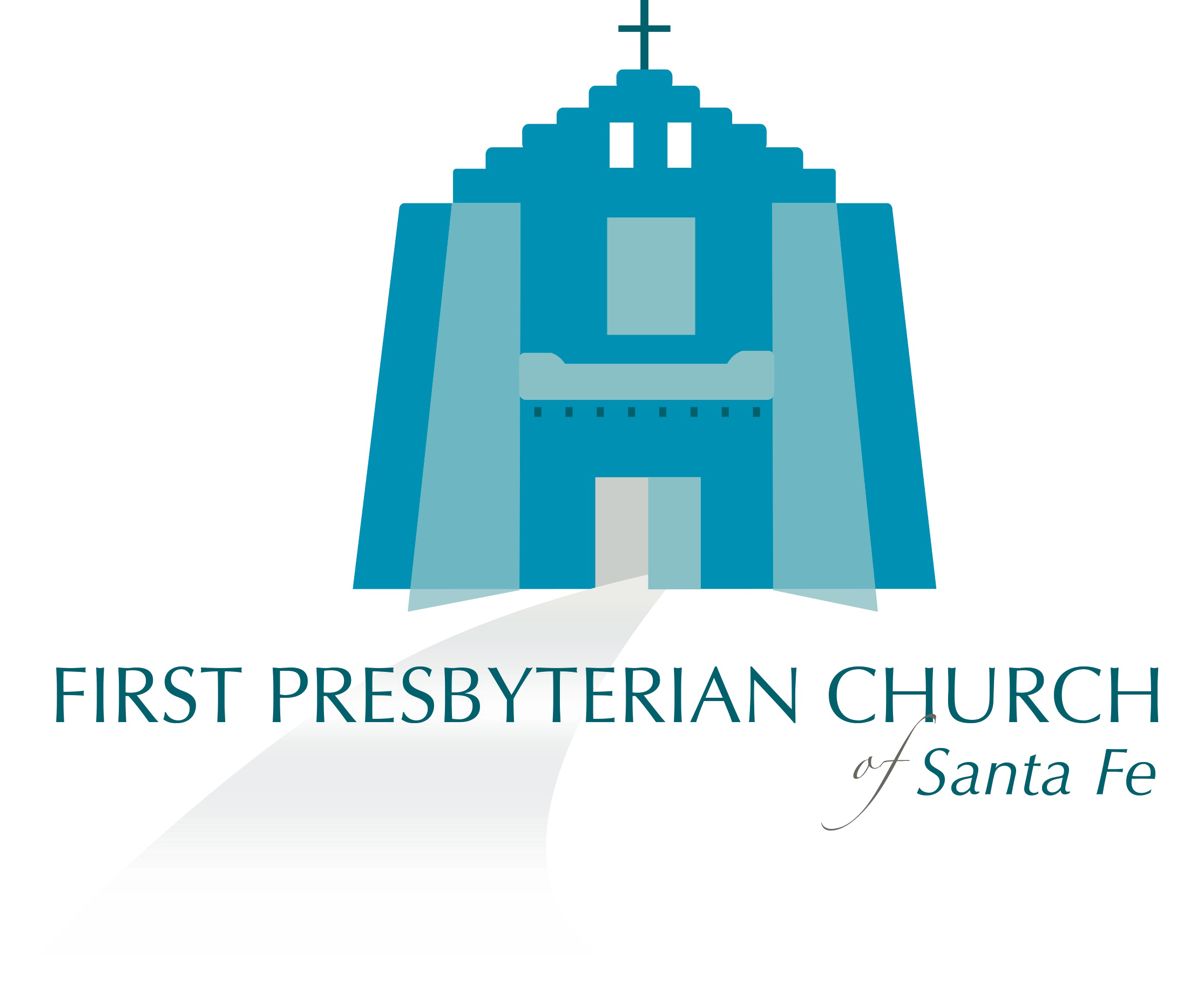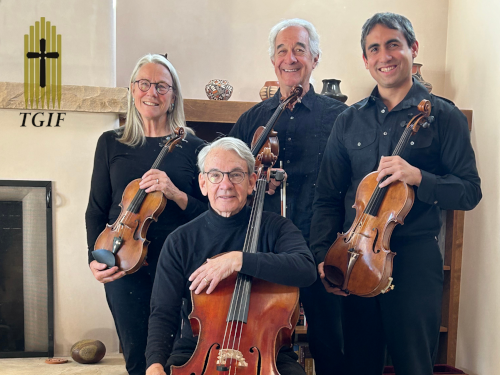TGIF, Jan 5, 5:30pm
The Atalaya String Quartet will be playing music by Dmitri Shostakovich and Franz Joseph Haydn at our TGIF Concert on Friday. Sanctuary doors open at 5:15 pm, and the concert begins at 5:30. The concert is free with donations accepted.
The Quartet says of itself: “We are four long-time Santa Fe residents who love making music together. Although we took different paths on our way to Santa Fe, each of us is deeply engaged with the people and cultures of Northern New Mexico, and together we express the simple joy of being Santa Feans through our music.” Come and join in their joy. All are welcome.
The Artists
Peter Glankoff & Julanna Gilbert, Violins
Ari Le, Viola
Robert Coombe, Cello
Program
Dmitri Shostakovich (1906-1975)
String Quartet #7 in f sharp minor (1960)
Allegretto
Lento
Allegro
This short string quartet was written in 1960 and dedicated to Nina, Shostakovich’s first wife. She was a distinguished scientist, the mother of his two children and had a stabilizing influence on Shostakovich during the political unrest of the Stalinist era in Russia. Her sudden death in 1954 was devastating for him.
The quartet begins with a playful theme which moves seamlessly into a hauntingly beautiful slow movement. In sharp contrast, the sudden third movement conveys angst and even perhaps anger at the world. These raging emotions are calmed as the final section ends with sadness and softness. We hope that you hear within this work the depth of Shostakovich’s humanity.
Joseph Haydn (1732-1809)
String Quartet Opus 76 #2 in d minor, “Fifths” (1797 or 1798)
Allegro
Andante o piu tosto allegretto
Minuet
Finale – Vivace assai
The Opus 76 quartets were written following Haydn’s second trip to London. The first movement of this quartet is dominated by the sound of fifths, which is heard repeatedly and played periodically by all four instruments. Perhaps Haydn still had the sound of London’s Big Ben in his head. The second movement is light and cheerful with the first violin introducing the melody and playfully sampling variations. The third movement, a minuet, does not suggest a dainty dance form. Rather, one can imagine people having a rollicking good time as they dance in the street in ¾ time. The last movement continues with the idea of street music, and while it starts in d minor, it ends cheerfully in D major.

